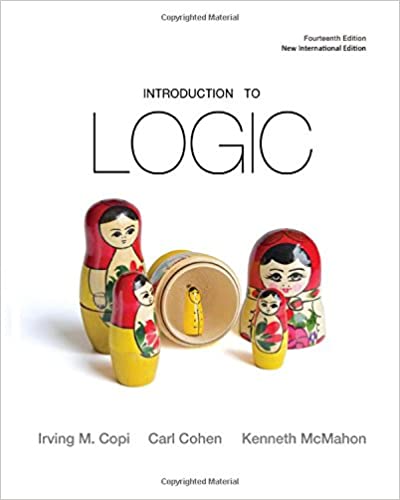
Join this college-preparatory course for an in-depth study of symbolic logic. This course will fine-tune your ability to reason abstractly, recognize patterns, and solve problems. You will find this course especially helpful if you are interested in computer science or the in-depth study of philosophy.
How to get the most out of Modern Symbolic with Sam Nicholson, Ph.D.:
-
First, read the course materials below before the first class meeting.
-
Then have a notebook ready and available for class notes each live session.
-
Read assignments before class meetings
-
Watch that week’s recording if you need to revisit information from our live session.
-
Do the assignments, quizzes, and any extra work assigned for that week.
-
Once the course is completed to the parent's and professor’s satisfaction, there is a Certificate of Completion at the end to be filled in for your records.
- Note: The text includes mature topics. Make sure to pre-read or check with the instructor for details.
Total classes: 12
Duration: 55 minutes per class
Readings and Homework: Expect to spend at least 1 -3 hours per week on the reading assignments and homework. The readings are short but dense, but much of the course load will involve working through the homework problems which appear in the textbook.
Prerequisite: There are no prerequisites for this course. It is beneficial for you to have taken "Reasoning and Rhetoric” and “Classical Syllogistic Logic” (available through Unlimited Access), but this is not necessary to understand the material presented here.
Suggested grade level: 10th to 12th grade
Suggested credit: One full semester Symbolic Logic
Instructor: Sam Nicholson, Ph.D.
Instructor Email: scn8v@virginia.edu
Course Description: In this course, we will study the rudiments of propositional logic. This type of logic is more advanced than syllogistic logic but does not introduce quantifiers or relations. This course is ideal for an upper-class high school student preparing for college and the material covered here has applications in both the sciences and the humanities. Students interested in philosophy or computer science will find the material covered here a useful preparation for college-level study. We will proceed slowly and methodically, covering the essentials of propositional logic and mastering all of the basic forms of deductive inference. We will learn about truth tables, truth-functional connectives, forms of valid inference, and methods of proof.
Course outline:
1st Class- Introduction, Modern Symbolic Language; Read: Chapter 8, section 8.1
2nd Class- Conjunction, Disjunction, Negation; Read: Chapter 8, sections 8.1 – 8.2
3rd Class- Conditionals and Material Implication; Read: Chapter 8, section 8.3; First quiz
4th Class- Argument Forms and Substitution Instances; Read: Chapter 8, section 8.4
5th Class - Formal Definition of Validity; Read: Chapter 8, sections 8.5 – 8.7
6th Class - Material and Logical Equivalence; Read: Chapter 8, sections 8.8 – 8.10; Second quiz
7th Class - Argument Forms and Proof of Validity; Read: Chapter 9, sections 9.1 – 9.2
8th Class - Extended Proofs; Read: Chapter 9, sections 9.3 – 9.5
9th Class - Replacement Rules; Read: Chapter 9, section 9.6; Midterm
10th Class - Natural Deduction & Rules of Inference; Read: Chapter 9, sections 9.7 – 9.8; Third quiz
11th Class - Proof by Reductio Ad Absurdum; Read: Chapter 9, sections 9.9 – 9.11
12th Class – Conditional proofs and Sub-proofs (Handout); Cumulative Final (Due 4/15/23)
Course materials: Our course text is Copi and Cohen's famous Introduction to Logic, 14th
edition. ISBN-10: 0205820379, ISBN-13 978-0205820375 (https://amzn.to/3lh9nL8 or BookFinder.com). It is permissible to use other versions of this textbook, but please be aware that there may be minor differences in pagination and material. For this reason, assignments are indicated by chapter and section numbers rather than page numbers.
Homework: There will be three quizzes, a mid-term examination, and a cumulative final exam. These will make up 45%, 25%, and 25% of your grade, respectively. The remaining 5% of your grade will be assigned on the basis of attendance and participation.
- Teacher: Sam Nicholson